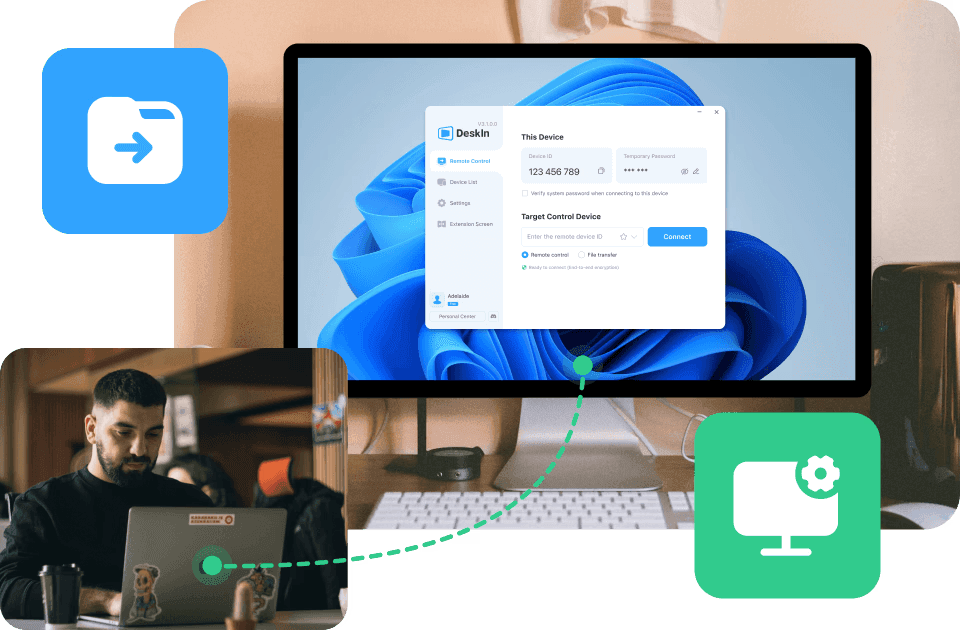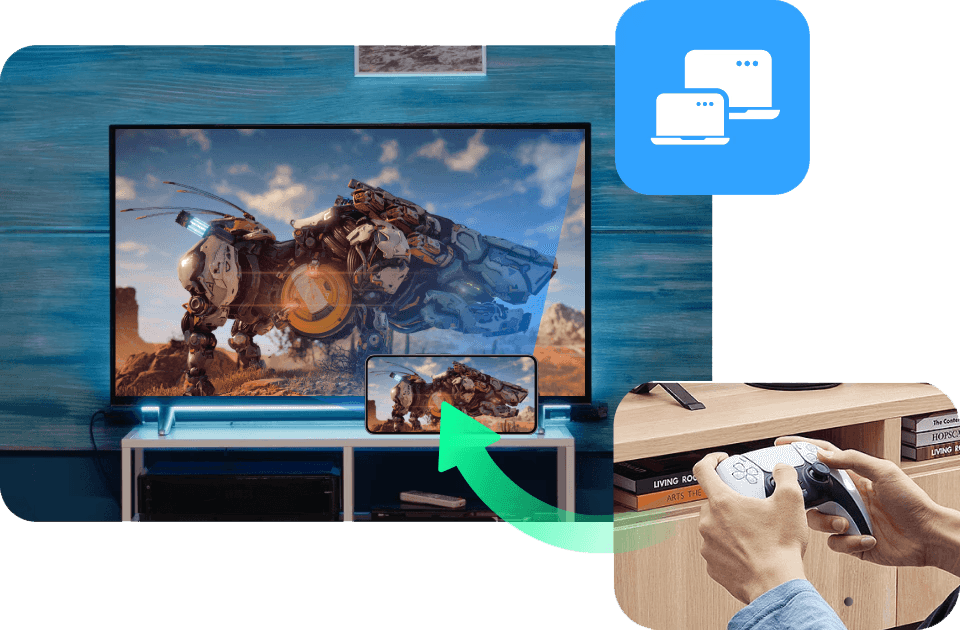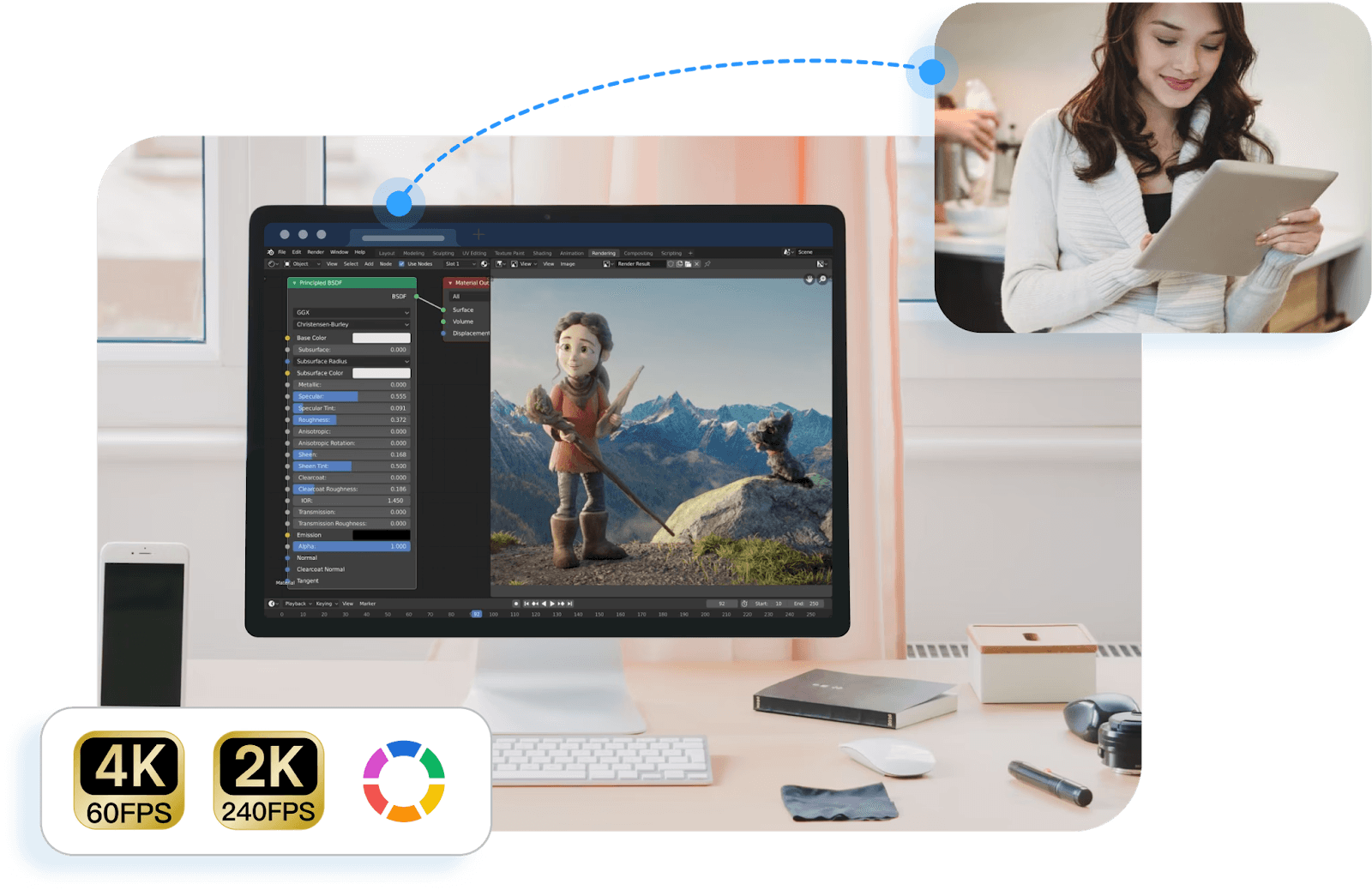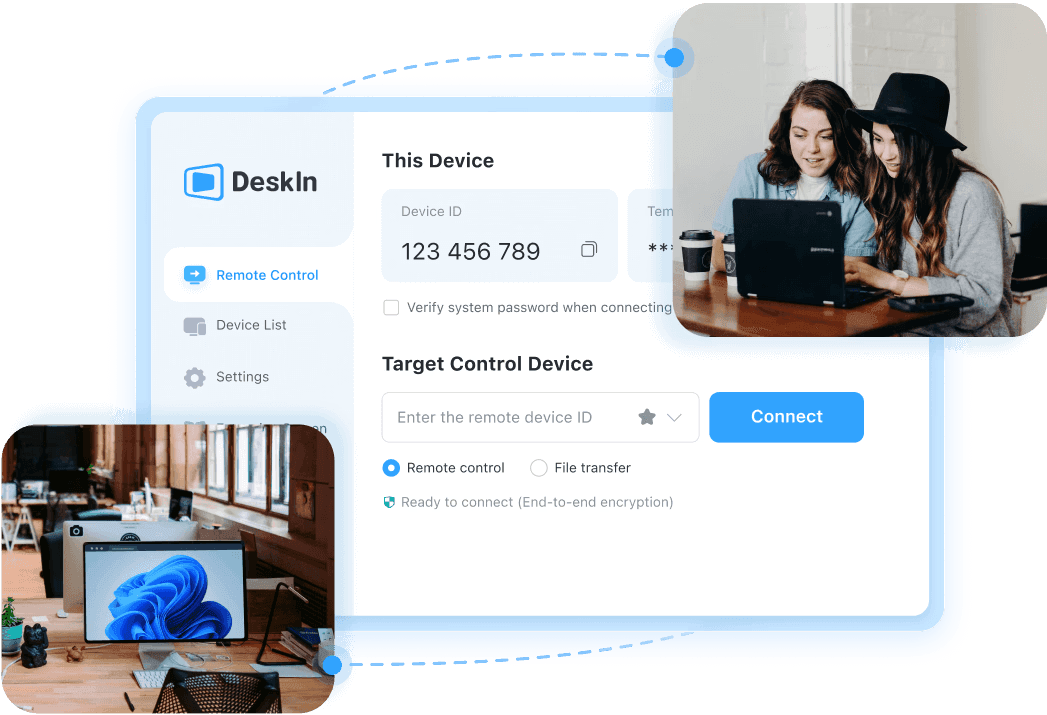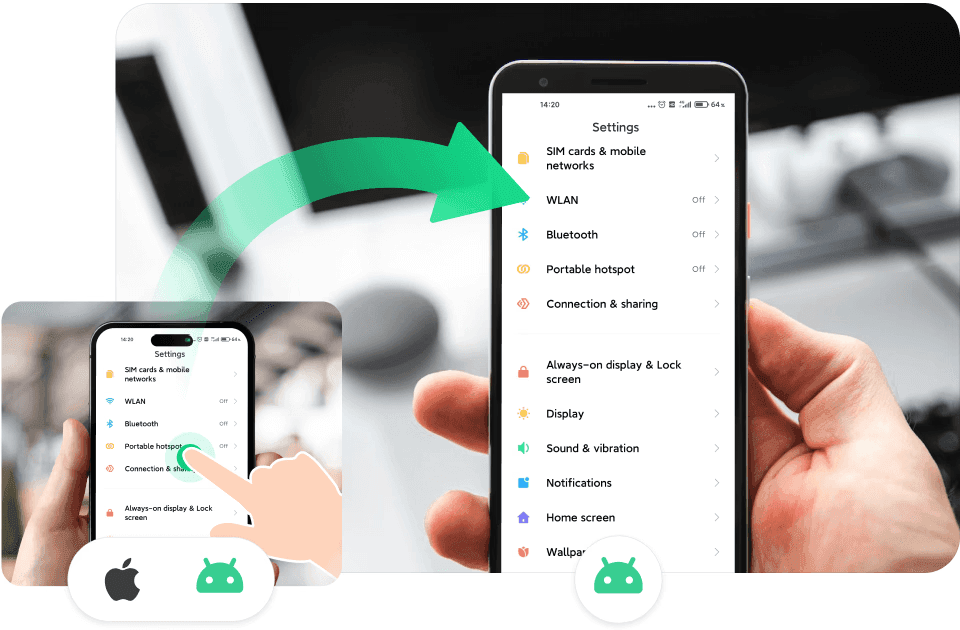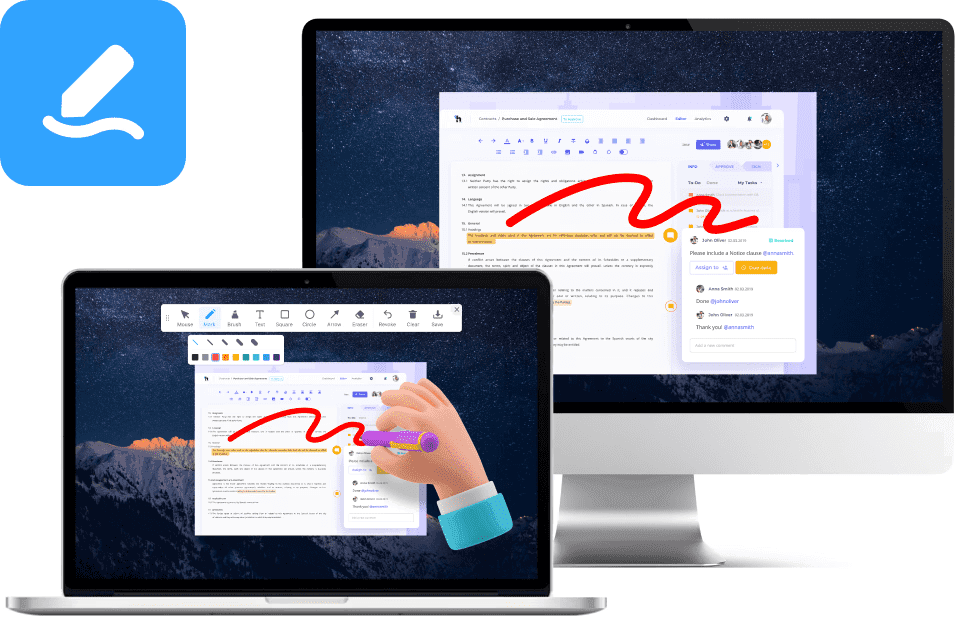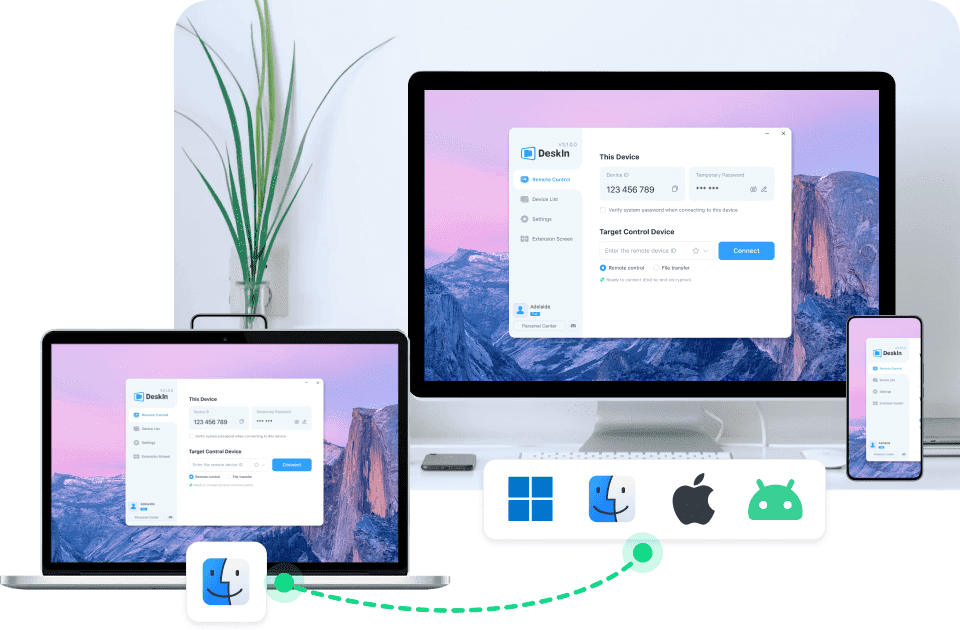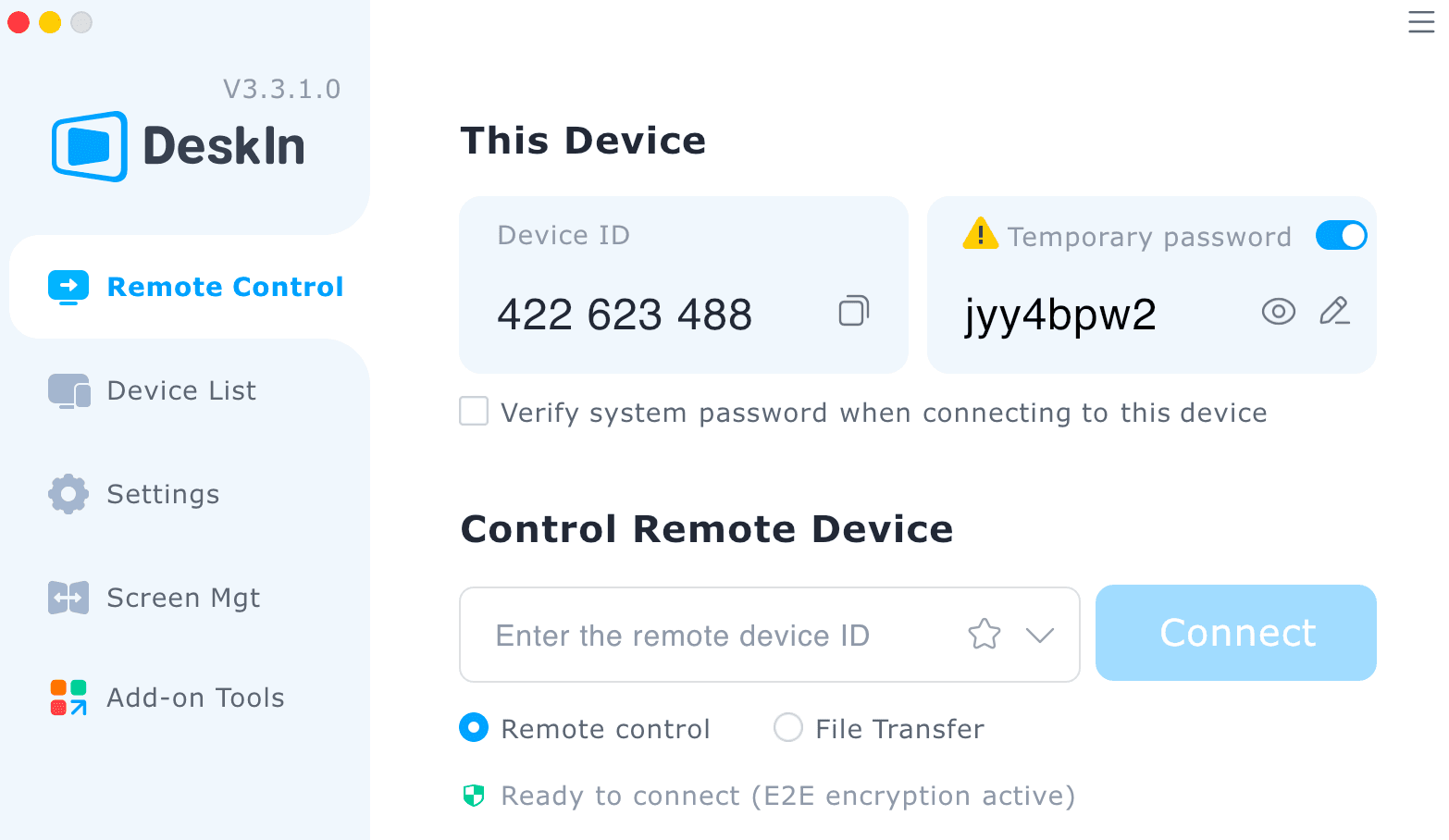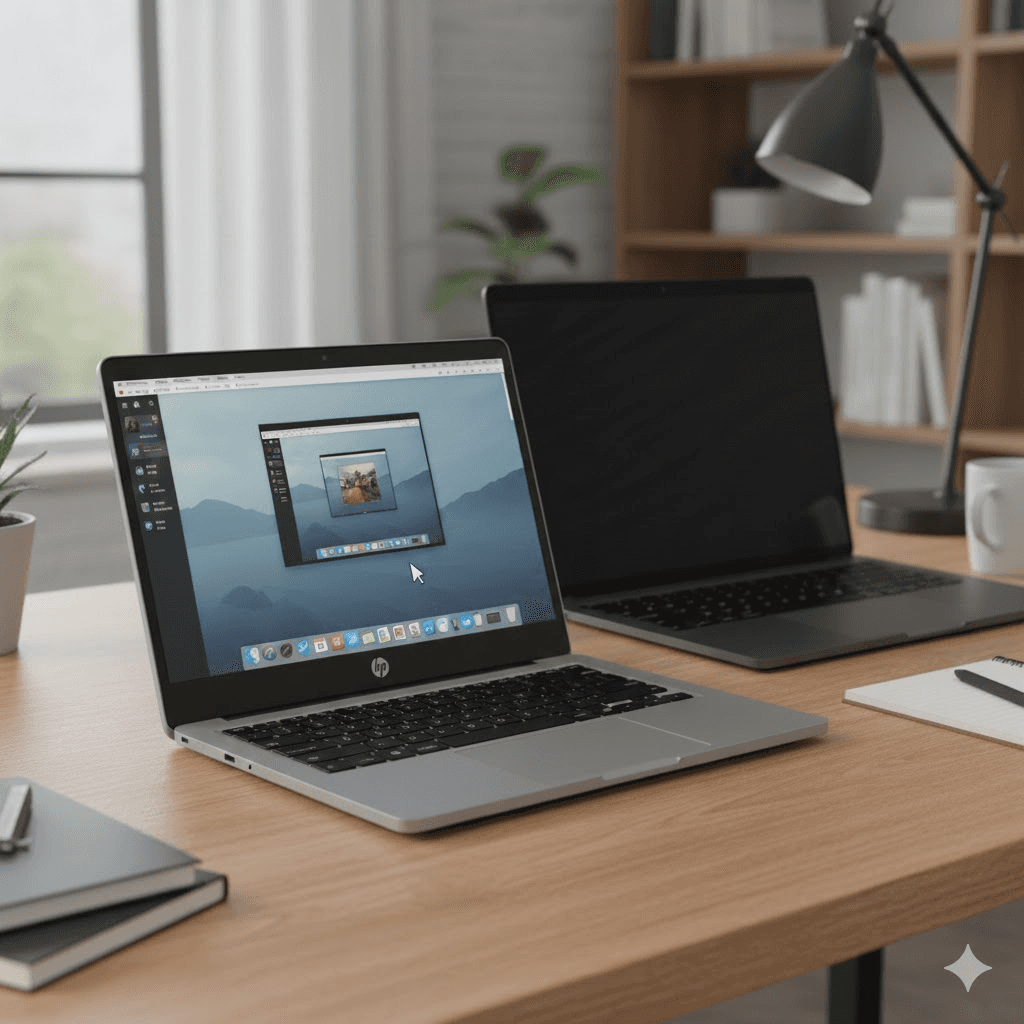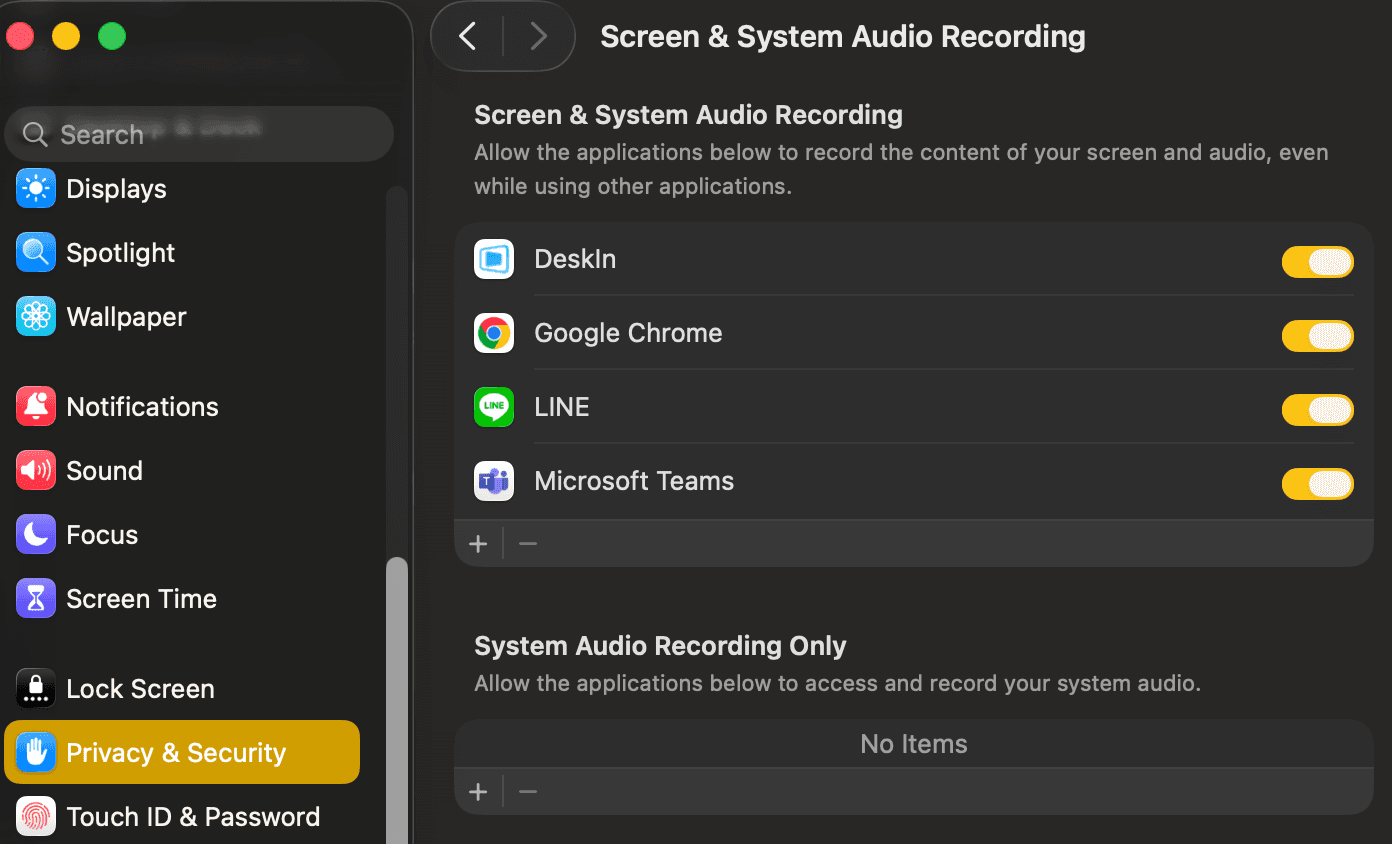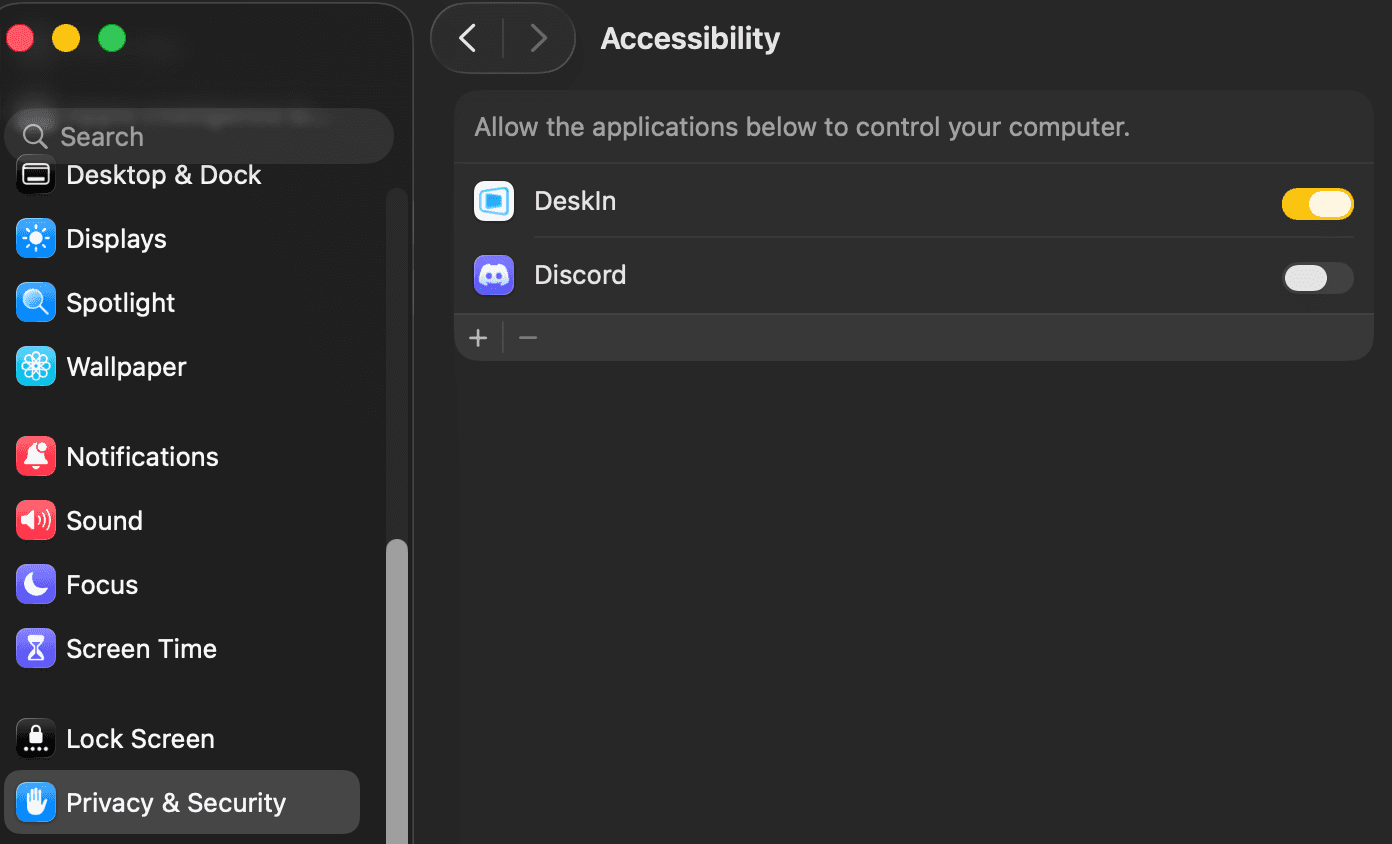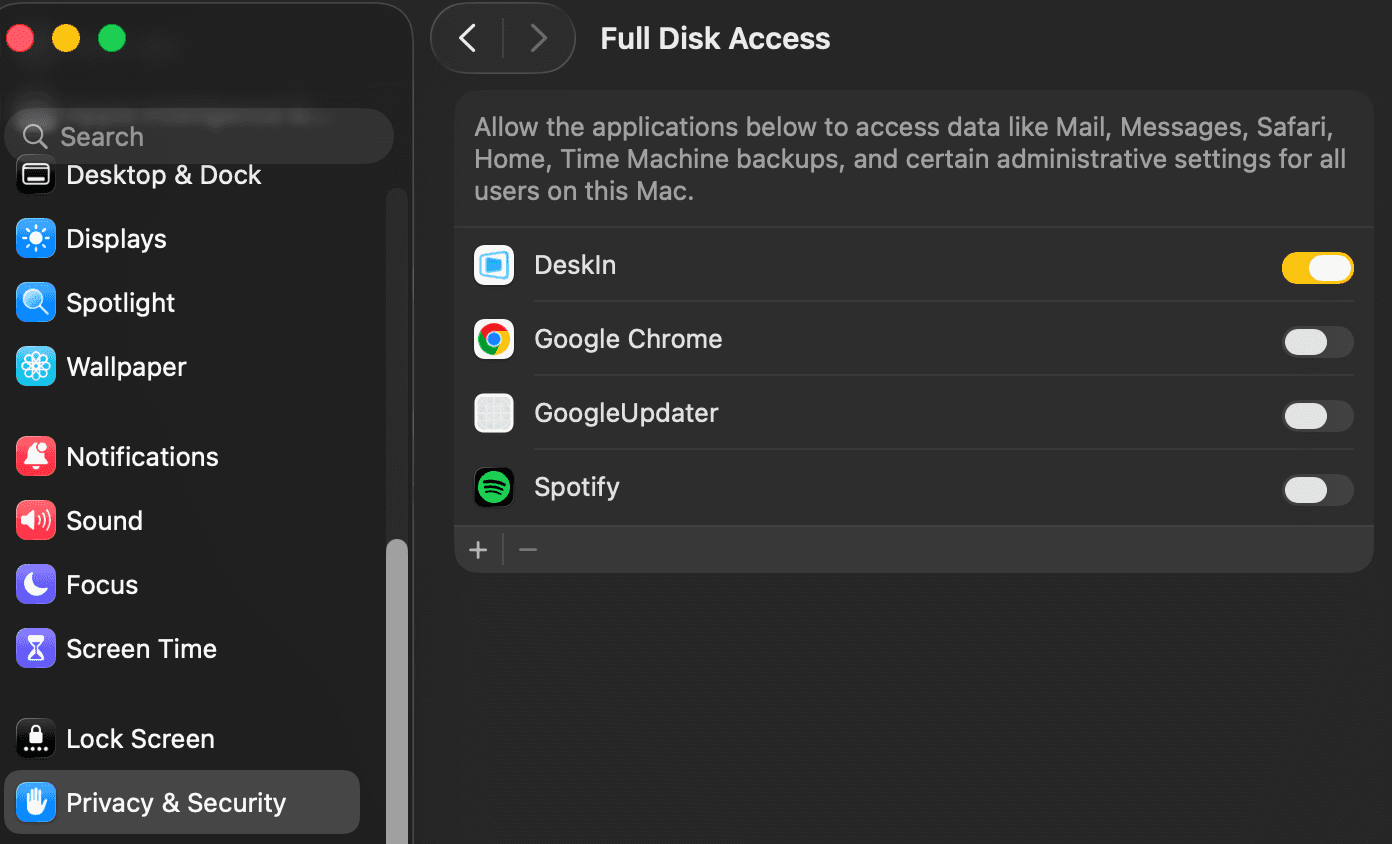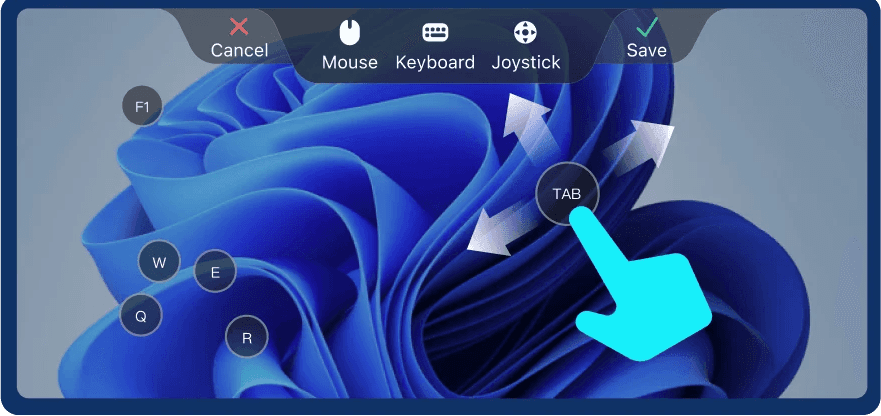你是否曾經覺得手機怪怪的?沒有原因的自動重新開機、通話時聽到奇怪雜音、或是手機莫名被鎖,無法解鎖?這些看似平常的小狀況,其實可能是手機被監控的警訊。
根據資安統計,台灣地區每年因手機被駭導致的詐騙損失金額高達數億元,而長輩群體因對 3C 產品不熟悉,更容易成為詐騙集團鎖定的目標。詐騙手法日新月異,只要不小心點開一個看似正常的連結或網頁、下載了可疑軟體,手機就可能被遠端惡意監控,個人資料、銀行帳號、通訊內容全都暴露在風險之中。
這篇文章將帶你深入了解怎麼知道手機被監視的關鍵徵兆,以及發現異樣時該如何檢查並解除監控,同時分享如何使用安全的遠端工具協助長輩進行手機健檢,從根本預防手機被惡意入侵的風險。
手機被監控的 7 大可疑徵兆
懷疑手機被監控卻不確定?以下 7 個異常現象是最常見的電話被監聽徵兆,如果你的 iPhone 或 Android 手機出現多項狀況,就需要提高警覺了。
徵兆一:手機變得異常耗電或發熱
如果你的手機在正常使用下,電池消耗速度突然比平常快很多,或是沒在使用時機身也持續發熱,這很可能是手機被監視的第一個警訊。
監控軟體通常會長時間在後台悄悄運作,持續追蹤你的位置、通話記錄或訊息內容,這些動作都會大量佔用手機效能,導致電池快速消耗並產生熱能。當然,如果是電池健康度下降或正在玩高耗電遊戲,也可能出現類似狀況,但若排除這些因素後仍有異常,就要特別注意了。
徵兆二:手機運作突然變得很慢
你的 iPhone 原本運作流暢,最近卻經常卡頓、開 App 變慢?如果不是因為安裝太多軟體或照片占滿儲存空間,那麼手機突然變慢很可能是因為有監控程式在背景執行,占據了大量內存和處理效能。
這種效能下降通常不會立刻出現,可能要經過幾週才會逐漸察覺,這也是為什麼許多人被監控了還渾然不知。
徵兆三:手機出現自動異常行為
手機自動會動是最明顯的被駭徵兆之一。如果你發現手機會突然自己重新啟動、在有電的情況下無預警關機,或是螢幕在沒有通知時突然亮起,甚至偶爾看到螢幕好像自己在滑動,這都可能代表有人正在遠端操控你的手機。
現代智慧型手機不應該在沒有明確原因的情況下自行重啟或關機,如果經常發生這種狀況,建議立即進行全面檢查。
徵兆四:手機螢幕被鎖,無法自行解鎖
如果你發現手機螢幕突然被鎖定,無法用原本的密碼、指紋或 Face ID 解鎖,這是極高風險的被入侵或被遠端控制警訊。某些惡意監控軟體或駭客程式能夠強制修改鎖屏設定,甚至替換你的系統密碼,讓你完全無法進入手機主畫面。 這種情況往往代表裝置權限已被竊取,駭客可能正試圖鎖定資料或勒索贖金。
徵兆五:收到陌生訊息或好友邀請
如果你在社群媒體上收到陌生人的好友邀請或群組邀請,對方卻知道你的名字、電話或其他個人資訊,這很可能代表手機被遠端監控導致個資外洩。
此外,如果手機收到內容奇怪、充滿符號或亂碼的簡訊,千萬不要點擊裡面的連結,因為這些可能是針對監控軟體發送的控制訊息,或是試圖讓你下載惡意程式的釣魚訊息。

徵兆六:瀏覽器出現莫名的瀏覽記錄
養成定期檢查手機瀏覽記錄的習慣非常重要。如果發現瀏覽器歷史記錄中出現你從未造訪過的網站,或是下載了你沒印象的檔案,這可能表示有人曾經遠端操作你的手機。
同時也要小心莫名訊息中帶有連結的內容,盡量不要點開陌生訊息的連結,因為一旦點開,手機可能會迅速感染病毒程式。
徵兆七:通話過程中聽到奇怪的雜音或回音
現代通訊技術已經相當成熟,通話品質一般都很穩定。如果你在與他人通話時,經常聽到不明來源的雜音、回音、嗶嗶聲或其他人的聲音,即使切換網路或重撥也無法改善,這很可能是手機被監聽的明確徵兆。
傳統的電話竊聽雖然已不常見,但加密不良或間諜軟體仍可能造成通話干擾,尤其在使用 LINE、FaceTime 或其他通訊軟體時更容易出現異常。
如何檢查並解除手機被遠端監控?6 個實用方法幫到你
當你懷疑手機被遠端監視時,可以透過以下 6 個方法進行全面檢查,並採取相應的解除措施。這些方法同時適用於 iPhone 和 Android 手機。
💡溫馨提示:如果你需要協助長輩檢查手機但人不在身邊,可以使用安全的遠端軟體 DeskIn 直接操控他們的手機進行排查,避免電話溝通不清楚的困擾。
方法一:檢查手機是否有隱藏或可疑程式
不管是 Android 還是 iPhone,都提供了隱藏 App 的功能,這也成為監控軟體藏身的最佳位置。以下是檢查隱藏程式的詳細步驟:
iPhone 檢查步驟:
在手機主畫面一直向右滑到最後,進入「App 資料庫」
尋找「隱藏項目」或類似的分類資料夾
透過 Face ID 或密碼驗證後,檢查是否有不認識的 App
同時前往「設定」>「一般」>「iPhone 儲存空間」,查看所有已安裝的應用程式
Android 檢查步驟:
前往手機「設定」
點選「應用程式」或「應用程式管理」
找到「顯示隱藏的應用程式」選項
仔細檢查是否有不明來源的程式
如果發現任何陌生軟體或名稱可疑的 App(例如包含「spy」、「monitor」等字眼),請立即卸載。若發現有無法刪除的軟體,建議尋求專業資安人員協助。
方法二:調整應用程式定位權限,避免行蹤被追蹤
許多監控行為都是透過定位功能來追蹤你的行蹤。幸好 iPhone 和 Android 都提供了精細的定位權限管理,你可以透過以下方式加強防護:
iPhone 定位權限設定:
前往「設定」>「隱私權與安全性」>「定位服務」
逐一檢查每個 App 的定位權限設定
對於高風險程式(如瀏覽器、社交軟體),將「準確位置」選項關閉
在「定位服務」頁面向下滑到底部,點選「系統服務」
選擇「重要位置」,清除歷史定位記錄
這項「模糊定位」功能可以讓 App 只獲取你的大概位置,而非精確座標,有效降低被追蹤的風險。

Android 定位權限設定:
前往「設定」>「應用程式」
選擇「定位服務」或「位置資訊」
關閉「Google 定位精確度」中的「提高定位精準度」選項
逐一檢查各 App 的位置權限,設定為「僅在使用時允許」
方法三:安裝防毒軟體或反追蹤程式
安裝可靠的防毒軟體是預防手機被監視的有效方法,特別是 Android 裝置更需要額外防護。以下是幾款值得信賴的安全軟體:
Surfshark Antivirus:提供即時防護功能,可自動掃描下載內容和 App
Malwarebytes:專門偵測間諜軟體和惡意程式
Norton Mobile Security:整合防毒、防護和裝置追蹤功能
Avast Mobile Security:免費版本已包含基礎掃描功能
重要提醒:下載任何軟體時,務必前往官方 App Store 或 Google Play 商店,不要透過連結、QR Code 或第三方網站安裝程式,以免下載到假冒的惡意軟體。

方法四:定期清理瀏覽記錄與快取資料
定期清除瀏覽記錄不僅能保護隱私,也能移除潛藏的追蹤 Cookie 和惡意腳本。
Android 清理步驟:
打開 Google Chrome 瀏覽器
點選右上角的「⋮」按鈕
前往「設定」>「隱私權和安全性」
選擇「清除瀏覽資料」
勾選要清除的項目(建議全選),設定時間範圍後確認
iPhone 清理步驟:
前往「設定」
向下滑動找到「Safari」
點選「清除瀏覽記錄及網站資料」
確認清除
建議每週至少執行一次清理,養成良好的資安習慣。
方法五:更新 Google 帳號或 Apple ID 密碼
如果你的手機被監控,帳號密碼很可能也已經外洩。由於 Google 帳號和 Apple ID 連結了許多重要服務(包括雲端備份、電子郵件、支付資訊等),立即更改密碼能有效降低風險擴大。
更改 Google 帳號密碼:
開啟 Google 帳戶管理頁面
進入「安全性」選項
選擇「登入 Google」>「密碼」
輸入新密碼後點選「變更密碼」
建議同時啟用「兩步驟驗證」增加安全性
更改 Apple ID 密碼:
前往 iPhone「設定」
點選最上方的帳號名稱
選擇「密碼與安全性」>「更改密碼」
依照螢幕指示完成密碼更新
考慮開啟「雙重認證」功能
密碼設定建議:使用至少 12 位元的強密碼,結合大小寫字母、數字和符號,避免使用生日或常見詞彙。
方法六:重置手機為原廠設定(最後手段)
如果以上方法都無法解除監控,恢復原廠設定是最徹底的解決方式。這個操作會刪除所有資料、應用程式和設定,將手機恢復到出廠狀態。
重要警告:此方法會清除所有內容,使用前務必先備份重要資料!
Android 重置步驟:
前往「設定」>「系統」
選擇「重設」或「重設選項」
點選「清除所有資料(重設為原廠設定)」
確認執行並等待重置完成
iPhone 重置步驟:
前往「設定」>「一般」
選擇「移轉或重置 iPhone」
點選「清除所有內容和設定」
輸入密碼確認後執行
重置完成後,建議先更新到最新系統版本,再逐一安裝需要的 App,並仔細檢查每個程式的權限設定。
爲什麽要定期幫長輩檢查手機是否在被監控?
許多人可能會疑惑:為什麼特別強調要幫長輩檢查手機?以下兩個關鍵原因說明了長輩群體面臨的特殊風險。
原因一:高齡族群已成為詐騙集團的主要目標
根據警政署統計,台灣地區每天因詐騙造成的損失金額動輒數百萬元,其中 60 歲以上長者受騙比例高達 40% 以上。詐騙集團看準長輩手上握有「高額退休金與儲蓄」,透過各種手段接近他們。
除了傳統的電話詐騙,詐騙集團也會透過監控軟體入侵長輩的手機,竊取個人資訊、銀行帳戶、親友聯絡方式等,再根據這些資訊量身打造詐騙話術,成功率大幅提升。
原因二:長輩對數位科技不熟悉,防範意識較低
大部分長輩對智慧型手機和網路安全的認知有限,在使用 iPhone 或 Android 手機時,常會出現以下高風險行為:
隨意點擊陌生訊息中的連結
誤入詐騙群組或參加釣魚活動
下載來路不明的 App
將所有 App 權限都設為「允許」
使用過於簡單的密碼或與他人共用密碼
即使長輩感覺手機怪怪的,往往也不知道該如何檢查或處理,有些甚至堅信「我不會被騙」而不願承認問題。這時候就需要身邊的年輕人多關心,定期協助檢查手機安全狀態,及早發現並排除風險。
使用 DeskIn 遠端軟體,安全協助長輩排查手機監控問題
如果你經常不在長輩身邊,用電話口頭指導他們檢查手機往往事倍功半,長輩聽不懂專業術語,你也看不到實際操作畫面,溝通起來非常費力。
這時候,一款安全、易用的遠端控制軟體就能完美解決這個問題。DeskIn 是專為跨裝置遠端控制設計的軟體,可以讓你在長輩同意後,直接透過自己的手機或電腦操作長輩的裝置,幫他們進行手機健檢、排查可疑程式、調整安全設定等操作。此外,你也可以將 DeskIn 作為家長監控軟體來使用,接遠端幫孩子清除不良訊息,查看手機使用時間,進行軟體管控,保障一家老小的「電子衝浪」安全。
DeskIn 的核心安全防護機制:
銀行級 256 位元加密:所有遠端連線都經過軍規級加密保護
新裝置登入需信箱驗證:確保帳號不會被盜用
連線雙重驗證:每次遠端連線都需要臨時密碼、安全密碼或被控端手動確認
同帳號限制:只有登入同一個帳號的裝置才能進行遠端控制
自動隱私保護:輸入密碼或支付時螢幕會自動變黑,防止資料外洩
隱私螢幕模式:遠端操作時可開啟隱私螢幕,避免被旁人偷看
黑白名單機制:可設定允許或禁止的裝置,防止陌生連線
除了安全防護,DeskIn 還提供內建語音通話和螢幕標注功能,讓你在遠端操作時可以同步跟長輩講解,幫助他們理解操作步驟,真正做到「教會他們」而不只是「幫他們做」。
💻 立即下載 DeskIn 免費試用,為家中長輩建立一道安全防線!


如何使用 DeskIn 檢查長輩手機是否被監控?
以下是完整的操作步驟,整個過程只需 5 分鐘:
第一步:雙方裝置都安裝 DeskIn
在你和長輩的手機上都下載並安裝 DeskIn App,然後註冊一個免費帳戶並登入。iOS 用戶前往 App Store,Android 用戶前往 Google Play 商店搜尋「DeskIn」即可找到。
第二步:長輩端開啟遠端控制權限
請長輩在 DeskIn 中開啟「允許遠端控制本設備」選項,並選擇遠端控制的驗證方式(可設定連線密碼或手動確認)。這個步驟確保遠端控制必須經過長輩同意,不會被惡意使用。
第三步:從你的裝置發起連線
在你的裝置列表中找到長輩的手機,輸入連線密碼或請長輩手動通過驗證,即可開始遠端操作。你會看到長輩手機的即時畫面,所有操作都如同直接使用他們的手機一樣流暢。
第四步:邊操作邊講解
在檢查手機的過程中,你可以開啟語音通話功能與長輩對話,或使用標注工具在螢幕上圈選重點,讓長輩清楚了解你在做什麼、為什麼這樣做。這種互動式的教學方式,能大幅提升長輩的資安意識。

日常安全使用遠端軟體的 5 個建議
部分使用者可能擔心:使用遠端軟體本身會不會也有安全風險?確實,如果選用不安全的遠端工具或使用方式不當,可能反而帶來隱患。以下是安全使用遠端軟體的5個重要原則:
選擇高安全等級的遠端軟體:務必選用像 DeskIn 這類採用端對端加密、具備多重驗證機制的正規軟體,避免使用來路不明的程式
避免使用公共 Wi-Fi 進行遠端連線:公共網路容易被中間人攻擊,建議使用自家網路或手機行動數據進行遠端操作
只從官方管道下載軟體:前往官網或官方應用商店下載,切勿透過不明連結、第三方網站或 QR Code 安裝
絕對不要相信陌生人要求你下載遠端程式:這是詐騙集團常用的手法!無論對方自稱是銀行客服、警察、檢察官或任何單位,都不應該要求你安裝遠端軟體,這類要求 100% 是詐騙
定期更新密碼並妥善保管:每 1-3 個月更換一次連線密碼和帳號密碼,不要與他人共用帳號,也不要在陌生裝置上登入
善用軟體內建的安全設定:DeskIn 提供豐富的安全選項,例如黑白名單、強制手動驗證、隱私螢幕等,建議依照需求開啟相應功能
只要遵循這些原則,遠端軟體就能成為你守護家人資安的有力工具,而不是潛在風險。
關於手機被監控或監聽的常見問題
Q1:如何確認自己的 iPhone 是否被監控?
觀察手機是否出現異常耗電、發熱、變慢、自動重啟等現象,並檢查是否有不明 App、陌生瀏覽記錄或通話雜音。建議按照本文提供的 6 個方法進行全面檢查,包括查看隱藏程式、檢視定位權限、安裝防毒軟體等。如果發現多項異常徵兆,很可能已被監控。
Q2:電話被監聽會有什麼徵兆?
最明顯的徵兆是通話過程中聽到不明雜音、回音、嗶嗶聲或其他人的聲音,即使切換網路也無法改善。此外,通話後手機持續發熱、電池快速消耗,或是收到奇怪的簡訊,都可能是電話被監聽的警訊。
Q3:手機被監控後資料會外洩嗎?
是的,監控軟體可以竊取手機內的所有資料,包括通話記錄、簡訊內容、社交軟體對話、照片影片、定位資訊、銀行帳號密碼等。這些資料一旦落入詐騙集團手中,可能被用於量身打造詐騙話術,或直接盜用帳戶進行非法交易,風險極高。
Q4:使用 DeskIn 遠端軟體會不會也有被監控的風險?
DeskIn 採用銀行級 256 位元端對端加密,並具備多重驗證機制、同帳號限制、隱私保護等安全功能,是目前市面上安全等級最高的遠端軟體之一。所有連線都需要使用者主動授權,且可隨時中斷,不會有被惡意監控的風險。只要從官方管道下載並遵循安全使用原則,就能放心使用。
Q5:如果不確定手機是否被監控,該怎麼辦?
建議先執行本文提供的基礎檢查方法,包括查看隱藏程式、檢查行動數據用量、清理瀏覽記錄、更改帳號密碼等。如果仍不放心,可以安裝防毒軟體進行全面掃描,或是使用 DeskIn 請信任的家人朋友協助遠端檢查。最極端的方式是備份重要資料後恢復原廠設定,這能徹底清除所有可能的監控程式。
結論
手機被監控不只是隱私問題,更可能導致財產損失甚至人身安全威脅。了解如何知道手機被監控 iPhone 的徵兆,並掌握正確的檢查與解除方法,是現代人必備的資安知識。本文介紹了 7 大可疑徵兆、6 個實用檢查方法,以及如何使用 DeskIn 安全地協助長輩進行手機健檢。無論是為了保護自己還是家人,定期排查手機安全狀態都是不可或缺的防護措施。
記住預防永遠勝於治療。養成良好的手機使用習慣、提高資安意識、選用安全的工具,才能在這個數位時代有效守護個人隱私與財產安全。如果你需要一款安全、易用的遠端軟體來協助長輩處理手機問題,DeskIn 的全方位安全防護機制與直覺操作介面,絕對是你的最佳選擇!

你是否曾經覺得手機怪怪的?沒有原因的自動重新開機、通話時聽到奇怪雜音、或是手機莫名被鎖,無法解鎖?這些看似平常的小狀況,其實可能是手機被監控的警訊。
根據資安統計,台灣地區每年因手機被駭導致的詐騙損失金額高達數億元,而長輩群體因對 3C 產品不熟悉,更容易成為詐騙集團鎖定的目標。詐騙手法日新月異,只要不小心點開一個看似正常的連結或網頁、下載了可疑軟體,手機就可能被遠端惡意監控,個人資料、銀行帳號、通訊內容全都暴露在風險之中。
這篇文章將帶你深入了解怎麼知道手機被監視的關鍵徵兆,以及發現異樣時該如何檢查並解除監控,同時分享如何使用安全的遠端工具協助長輩進行手機健檢,從根本預防手機被惡意入侵的風險。
手機被監控的 7 大可疑徵兆
懷疑手機被監控卻不確定?以下 7 個異常現象是最常見的電話被監聽徵兆,如果你的 iPhone 或 Android 手機出現多項狀況,就需要提高警覺了。
徵兆一:手機變得異常耗電或發熱
如果你的手機在正常使用下,電池消耗速度突然比平常快很多,或是沒在使用時機身也持續發熱,這很可能是手機被監視的第一個警訊。
監控軟體通常會長時間在後台悄悄運作,持續追蹤你的位置、通話記錄或訊息內容,這些動作都會大量佔用手機效能,導致電池快速消耗並產生熱能。當然,如果是電池健康度下降或正在玩高耗電遊戲,也可能出現類似狀況,但若排除這些因素後仍有異常,就要特別注意了。
徵兆二:手機運作突然變得很慢
你的 iPhone 原本運作流暢,最近卻經常卡頓、開 App 變慢?如果不是因為安裝太多軟體或照片占滿儲存空間,那麼手機突然變慢很可能是因為有監控程式在背景執行,占據了大量內存和處理效能。
這種效能下降通常不會立刻出現,可能要經過幾週才會逐漸察覺,這也是為什麼許多人被監控了還渾然不知。
徵兆三:手機出現自動異常行為
手機自動會動是最明顯的被駭徵兆之一。如果你發現手機會突然自己重新啟動、在有電的情況下無預警關機,或是螢幕在沒有通知時突然亮起,甚至偶爾看到螢幕好像自己在滑動,這都可能代表有人正在遠端操控你的手機。
現代智慧型手機不應該在沒有明確原因的情況下自行重啟或關機,如果經常發生這種狀況,建議立即進行全面檢查。
徵兆四:手機螢幕被鎖,無法自行解鎖
如果你發現手機螢幕突然被鎖定,無法用原本的密碼、指紋或 Face ID 解鎖,這是極高風險的被入侵或被遠端控制警訊。某些惡意監控軟體或駭客程式能夠強制修改鎖屏設定,甚至替換你的系統密碼,讓你完全無法進入手機主畫面。 這種情況往往代表裝置權限已被竊取,駭客可能正試圖鎖定資料或勒索贖金。
徵兆五:收到陌生訊息或好友邀請
如果你在社群媒體上收到陌生人的好友邀請或群組邀請,對方卻知道你的名字、電話或其他個人資訊,這很可能代表手機被遠端監控導致個資外洩。
此外,如果手機收到內容奇怪、充滿符號或亂碼的簡訊,千萬不要點擊裡面的連結,因為這些可能是針對監控軟體發送的控制訊息,或是試圖讓你下載惡意程式的釣魚訊息。

徵兆六:瀏覽器出現莫名的瀏覽記錄
養成定期檢查手機瀏覽記錄的習慣非常重要。如果發現瀏覽器歷史記錄中出現你從未造訪過的網站,或是下載了你沒印象的檔案,這可能表示有人曾經遠端操作你的手機。
同時也要小心莫名訊息中帶有連結的內容,盡量不要點開陌生訊息的連結,因為一旦點開,手機可能會迅速感染病毒程式。
徵兆七:通話過程中聽到奇怪的雜音或回音
現代通訊技術已經相當成熟,通話品質一般都很穩定。如果你在與他人通話時,經常聽到不明來源的雜音、回音、嗶嗶聲或其他人的聲音,即使切換網路或重撥也無法改善,這很可能是手機被監聽的明確徵兆。
傳統的電話竊聽雖然已不常見,但加密不良或間諜軟體仍可能造成通話干擾,尤其在使用 LINE、FaceTime 或其他通訊軟體時更容易出現異常。
如何檢查並解除手機被遠端監控?6 個實用方法幫到你
當你懷疑手機被遠端監視時,可以透過以下 6 個方法進行全面檢查,並採取相應的解除措施。這些方法同時適用於 iPhone 和 Android 手機。
💡溫馨提示:如果你需要協助長輩檢查手機但人不在身邊,可以使用安全的遠端軟體 DeskIn 直接操控他們的手機進行排查,避免電話溝通不清楚的困擾。
方法一:檢查手機是否有隱藏或可疑程式
不管是 Android 還是 iPhone,都提供了隱藏 App 的功能,這也成為監控軟體藏身的最佳位置。以下是檢查隱藏程式的詳細步驟:
iPhone 檢查步驟:
在手機主畫面一直向右滑到最後,進入「App 資料庫」
尋找「隱藏項目」或類似的分類資料夾
透過 Face ID 或密碼驗證後,檢查是否有不認識的 App
同時前往「設定」>「一般」>「iPhone 儲存空間」,查看所有已安裝的應用程式
Android 檢查步驟:
前往手機「設定」
點選「應用程式」或「應用程式管理」
找到「顯示隱藏的應用程式」選項
仔細檢查是否有不明來源的程式
如果發現任何陌生軟體或名稱可疑的 App(例如包含「spy」、「monitor」等字眼),請立即卸載。若發現有無法刪除的軟體,建議尋求專業資安人員協助。
方法二:調整應用程式定位權限,避免行蹤被追蹤
許多監控行為都是透過定位功能來追蹤你的行蹤。幸好 iPhone 和 Android 都提供了精細的定位權限管理,你可以透過以下方式加強防護:
iPhone 定位權限設定:
前往「設定」>「隱私權與安全性」>「定位服務」
逐一檢查每個 App 的定位權限設定
對於高風險程式(如瀏覽器、社交軟體),將「準確位置」選項關閉
在「定位服務」頁面向下滑到底部,點選「系統服務」
選擇「重要位置」,清除歷史定位記錄
這項「模糊定位」功能可以讓 App 只獲取你的大概位置,而非精確座標,有效降低被追蹤的風險。

Android 定位權限設定:
前往「設定」>「應用程式」
選擇「定位服務」或「位置資訊」
關閉「Google 定位精確度」中的「提高定位精準度」選項
逐一檢查各 App 的位置權限,設定為「僅在使用時允許」
方法三:安裝防毒軟體或反追蹤程式
安裝可靠的防毒軟體是預防手機被監視的有效方法,特別是 Android 裝置更需要額外防護。以下是幾款值得信賴的安全軟體:
Surfshark Antivirus:提供即時防護功能,可自動掃描下載內容和 App
Malwarebytes:專門偵測間諜軟體和惡意程式
Norton Mobile Security:整合防毒、防護和裝置追蹤功能
Avast Mobile Security:免費版本已包含基礎掃描功能
重要提醒:下載任何軟體時,務必前往官方 App Store 或 Google Play 商店,不要透過連結、QR Code 或第三方網站安裝程式,以免下載到假冒的惡意軟體。

方法四:定期清理瀏覽記錄與快取資料
定期清除瀏覽記錄不僅能保護隱私,也能移除潛藏的追蹤 Cookie 和惡意腳本。
Android 清理步驟:
打開 Google Chrome 瀏覽器
點選右上角的「⋮」按鈕
前往「設定」>「隱私權和安全性」
選擇「清除瀏覽資料」
勾選要清除的項目(建議全選),設定時間範圍後確認
iPhone 清理步驟:
前往「設定」
向下滑動找到「Safari」
點選「清除瀏覽記錄及網站資料」
確認清除
建議每週至少執行一次清理,養成良好的資安習慣。
方法五:更新 Google 帳號或 Apple ID 密碼
如果你的手機被監控,帳號密碼很可能也已經外洩。由於 Google 帳號和 Apple ID 連結了許多重要服務(包括雲端備份、電子郵件、支付資訊等),立即更改密碼能有效降低風險擴大。
更改 Google 帳號密碼:
開啟 Google 帳戶管理頁面
進入「安全性」選項
選擇「登入 Google」>「密碼」
輸入新密碼後點選「變更密碼」
建議同時啟用「兩步驟驗證」增加安全性
更改 Apple ID 密碼:
前往 iPhone「設定」
點選最上方的帳號名稱
選擇「密碼與安全性」>「更改密碼」
依照螢幕指示完成密碼更新
考慮開啟「雙重認證」功能
密碼設定建議:使用至少 12 位元的強密碼,結合大小寫字母、數字和符號,避免使用生日或常見詞彙。
方法六:重置手機為原廠設定(最後手段)
如果以上方法都無法解除監控,恢復原廠設定是最徹底的解決方式。這個操作會刪除所有資料、應用程式和設定,將手機恢復到出廠狀態。
重要警告:此方法會清除所有內容,使用前務必先備份重要資料!
Android 重置步驟:
前往「設定」>「系統」
選擇「重設」或「重設選項」
點選「清除所有資料(重設為原廠設定)」
確認執行並等待重置完成
iPhone 重置步驟:
前往「設定」>「一般」
選擇「移轉或重置 iPhone」
點選「清除所有內容和設定」
輸入密碼確認後執行
重置完成後,建議先更新到最新系統版本,再逐一安裝需要的 App,並仔細檢查每個程式的權限設定。
爲什麽要定期幫長輩檢查手機是否在被監控?
許多人可能會疑惑:為什麼特別強調要幫長輩檢查手機?以下兩個關鍵原因說明了長輩群體面臨的特殊風險。
原因一:高齡族群已成為詐騙集團的主要目標
根據警政署統計,台灣地區每天因詐騙造成的損失金額動輒數百萬元,其中 60 歲以上長者受騙比例高達 40% 以上。詐騙集團看準長輩手上握有「高額退休金與儲蓄」,透過各種手段接近他們。
除了傳統的電話詐騙,詐騙集團也會透過監控軟體入侵長輩的手機,竊取個人資訊、銀行帳戶、親友聯絡方式等,再根據這些資訊量身打造詐騙話術,成功率大幅提升。
原因二:長輩對數位科技不熟悉,防範意識較低
大部分長輩對智慧型手機和網路安全的認知有限,在使用 iPhone 或 Android 手機時,常會出現以下高風險行為:
隨意點擊陌生訊息中的連結
誤入詐騙群組或參加釣魚活動
下載來路不明的 App
將所有 App 權限都設為「允許」
使用過於簡單的密碼或與他人共用密碼
即使長輩感覺手機怪怪的,往往也不知道該如何檢查或處理,有些甚至堅信「我不會被騙」而不願承認問題。這時候就需要身邊的年輕人多關心,定期協助檢查手機安全狀態,及早發現並排除風險。
使用 DeskIn 遠端軟體,安全協助長輩排查手機監控問題
如果你經常不在長輩身邊,用電話口頭指導他們檢查手機往往事倍功半,長輩聽不懂專業術語,你也看不到實際操作畫面,溝通起來非常費力。
這時候,一款安全、易用的遠端控制軟體就能完美解決這個問題。DeskIn 是專為跨裝置遠端控制設計的軟體,可以讓你在長輩同意後,直接透過自己的手機或電腦操作長輩的裝置,幫他們進行手機健檢、排查可疑程式、調整安全設定等操作。此外,你也可以將 DeskIn 作為家長監控軟體來使用,接遠端幫孩子清除不良訊息,查看手機使用時間,進行軟體管控,保障一家老小的「電子衝浪」安全。
DeskIn 的核心安全防護機制:
銀行級 256 位元加密:所有遠端連線都經過軍規級加密保護
新裝置登入需信箱驗證:確保帳號不會被盜用
連線雙重驗證:每次遠端連線都需要臨時密碼、安全密碼或被控端手動確認
同帳號限制:只有登入同一個帳號的裝置才能進行遠端控制
自動隱私保護:輸入密碼或支付時螢幕會自動變黑,防止資料外洩
隱私螢幕模式:遠端操作時可開啟隱私螢幕,避免被旁人偷看
黑白名單機制:可設定允許或禁止的裝置,防止陌生連線
除了安全防護,DeskIn 還提供內建語音通話和螢幕標注功能,讓你在遠端操作時可以同步跟長輩講解,幫助他們理解操作步驟,真正做到「教會他們」而不只是「幫他們做」。
💻 立即下載 DeskIn 免費試用,為家中長輩建立一道安全防線!


如何使用 DeskIn 檢查長輩手機是否被監控?
以下是完整的操作步驟,整個過程只需 5 分鐘:
第一步:雙方裝置都安裝 DeskIn
在你和長輩的手機上都下載並安裝 DeskIn App,然後註冊一個免費帳戶並登入。iOS 用戶前往 App Store,Android 用戶前往 Google Play 商店搜尋「DeskIn」即可找到。
第二步:長輩端開啟遠端控制權限
請長輩在 DeskIn 中開啟「允許遠端控制本設備」選項,並選擇遠端控制的驗證方式(可設定連線密碼或手動確認)。這個步驟確保遠端控制必須經過長輩同意,不會被惡意使用。
第三步:從你的裝置發起連線
在你的裝置列表中找到長輩的手機,輸入連線密碼或請長輩手動通過驗證,即可開始遠端操作。你會看到長輩手機的即時畫面,所有操作都如同直接使用他們的手機一樣流暢。
第四步:邊操作邊講解
在檢查手機的過程中,你可以開啟語音通話功能與長輩對話,或使用標注工具在螢幕上圈選重點,讓長輩清楚了解你在做什麼、為什麼這樣做。這種互動式的教學方式,能大幅提升長輩的資安意識。

日常安全使用遠端軟體的 5 個建議
部分使用者可能擔心:使用遠端軟體本身會不會也有安全風險?確實,如果選用不安全的遠端工具或使用方式不當,可能反而帶來隱患。以下是安全使用遠端軟體的5個重要原則:
選擇高安全等級的遠端軟體:務必選用像 DeskIn 這類採用端對端加密、具備多重驗證機制的正規軟體,避免使用來路不明的程式
避免使用公共 Wi-Fi 進行遠端連線:公共網路容易被中間人攻擊,建議使用自家網路或手機行動數據進行遠端操作
只從官方管道下載軟體:前往官網或官方應用商店下載,切勿透過不明連結、第三方網站或 QR Code 安裝
絕對不要相信陌生人要求你下載遠端程式:這是詐騙集團常用的手法!無論對方自稱是銀行客服、警察、檢察官或任何單位,都不應該要求你安裝遠端軟體,這類要求 100% 是詐騙
定期更新密碼並妥善保管:每 1-3 個月更換一次連線密碼和帳號密碼,不要與他人共用帳號,也不要在陌生裝置上登入
善用軟體內建的安全設定:DeskIn 提供豐富的安全選項,例如黑白名單、強制手動驗證、隱私螢幕等,建議依照需求開啟相應功能
只要遵循這些原則,遠端軟體就能成為你守護家人資安的有力工具,而不是潛在風險。
關於手機被監控或監聽的常見問題
Q1:如何確認自己的 iPhone 是否被監控?
觀察手機是否出現異常耗電、發熱、變慢、自動重啟等現象,並檢查是否有不明 App、陌生瀏覽記錄或通話雜音。建議按照本文提供的 6 個方法進行全面檢查,包括查看隱藏程式、檢視定位權限、安裝防毒軟體等。如果發現多項異常徵兆,很可能已被監控。
Q2:電話被監聽會有什麼徵兆?
最明顯的徵兆是通話過程中聽到不明雜音、回音、嗶嗶聲或其他人的聲音,即使切換網路也無法改善。此外,通話後手機持續發熱、電池快速消耗,或是收到奇怪的簡訊,都可能是電話被監聽的警訊。
Q3:手機被監控後資料會外洩嗎?
是的,監控軟體可以竊取手機內的所有資料,包括通話記錄、簡訊內容、社交軟體對話、照片影片、定位資訊、銀行帳號密碼等。這些資料一旦落入詐騙集團手中,可能被用於量身打造詐騙話術,或直接盜用帳戶進行非法交易,風險極高。
Q4:使用 DeskIn 遠端軟體會不會也有被監控的風險?
DeskIn 採用銀行級 256 位元端對端加密,並具備多重驗證機制、同帳號限制、隱私保護等安全功能,是目前市面上安全等級最高的遠端軟體之一。所有連線都需要使用者主動授權,且可隨時中斷,不會有被惡意監控的風險。只要從官方管道下載並遵循安全使用原則,就能放心使用。
Q5:如果不確定手機是否被監控,該怎麼辦?
建議先執行本文提供的基礎檢查方法,包括查看隱藏程式、檢查行動數據用量、清理瀏覽記錄、更改帳號密碼等。如果仍不放心,可以安裝防毒軟體進行全面掃描,或是使用 DeskIn 請信任的家人朋友協助遠端檢查。最極端的方式是備份重要資料後恢復原廠設定,這能徹底清除所有可能的監控程式。
結論
手機被監控不只是隱私問題,更可能導致財產損失甚至人身安全威脅。了解如何知道手機被監控 iPhone 的徵兆,並掌握正確的檢查與解除方法,是現代人必備的資安知識。本文介紹了 7 大可疑徵兆、6 個實用檢查方法,以及如何使用 DeskIn 安全地協助長輩進行手機健檢。無論是為了保護自己還是家人,定期排查手機安全狀態都是不可或缺的防護措施。
記住預防永遠勝於治療。養成良好的手機使用習慣、提高資安意識、選用安全的工具,才能在這個數位時代有效守護個人隱私與財產安全。如果你需要一款安全、易用的遠端軟體來協助長輩處理手機問題,DeskIn 的全方位安全防護機制與直覺操作介面,絕對是你的最佳選擇!


Play x Work
All at Once
DeskIn Remote Game
only $14.32 USD 🎉 Limited on July 16-31
Add promo code: deskinsummer1





